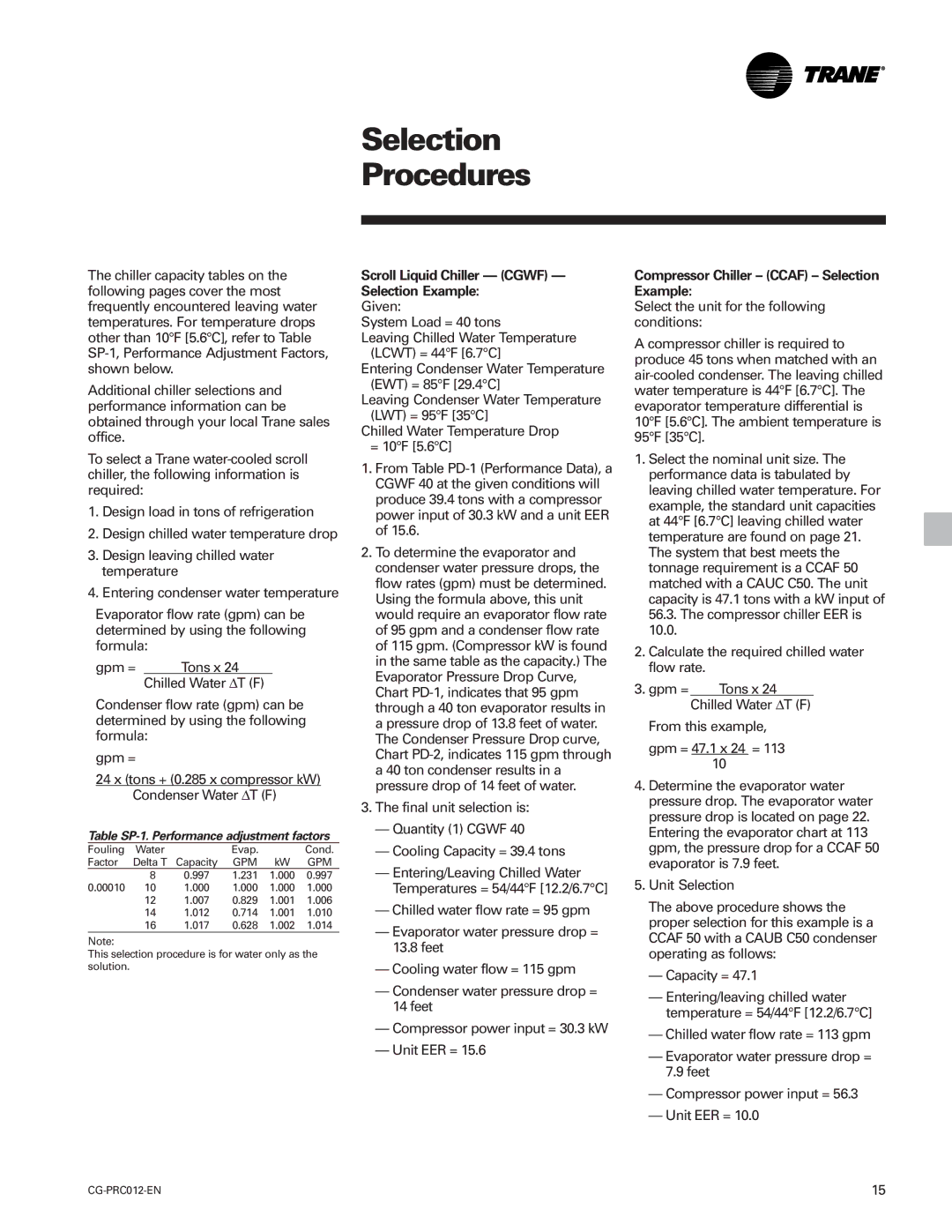CCAF, CGWF specifications
The Trane CGWF and CCAF series are notable advancements in the field of commercial air conditioning and heating solutions. Designed to provide efficient climate control, these units are favored for their reliability, energy efficiency, and innovative technologies.The Trane CGWF series is characterized by its water-cooled chiller design, making it suitable for a variety of commercial applications. Its primary feature is the use of the eco-friendly refrigerant R-134a, which not only minimizes environmental impact but also complies with evolving regulations regarding refrigerants. The CGWF models are equipped with high-efficiency scroll compressors, which contribute to reduced energy consumption while ensuring optimal performance.
The Series also boasts a range of cooling capacities, making it adaptable to various building sizes and requirements. The intelligent control systems embedded within the CGWF units allow for precise monitoring and adjustment of temperature settings, contributing to stable indoor conditions. Additionally, these chillers feature a robust construction that enhances durability, ensuring long-life service in demanding environments.
On the other hand, the Trane CCAF series reflects an advanced approach to air handling. These units are built with focus on energy efficiency as well, featuring the latest in variable frequency drive (VFD) technology. VFDs enable the system to adjust motor speed according to load requirements, resulting in significant energy savings and lower operational costs. The CCAF series also incorporates advanced filtration options, which improve indoor air quality by ensuring that particulates and contaminants are effectively removed from the air.
A notable characteristic of the CCAF models is their modular design, allowing for easy installation and maintenance. The plug-and-play configuration simplifies the setup, accommodating various spaces without requiring extensive modifications. Furthermore, both the CGWF and CCAF series support connectivity with advanced building management systems, facilitating real-time monitoring and control through smart technology.
In summary, the Trane CGWF and CCAF units stand out for their exceptional efficiency, cutting-edge technology, and flexibility in application. Their design and features reflect a commitment to sustainability and innovation, making them a compelling choice for businesses looking to optimize their HVAC systems while meeting contemporary environmental standards. With Trane’s reputation for quality and reliability, these series are trusted solutions for commercial climate control needs.

